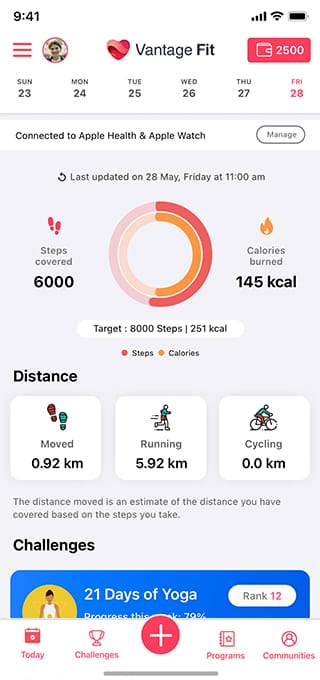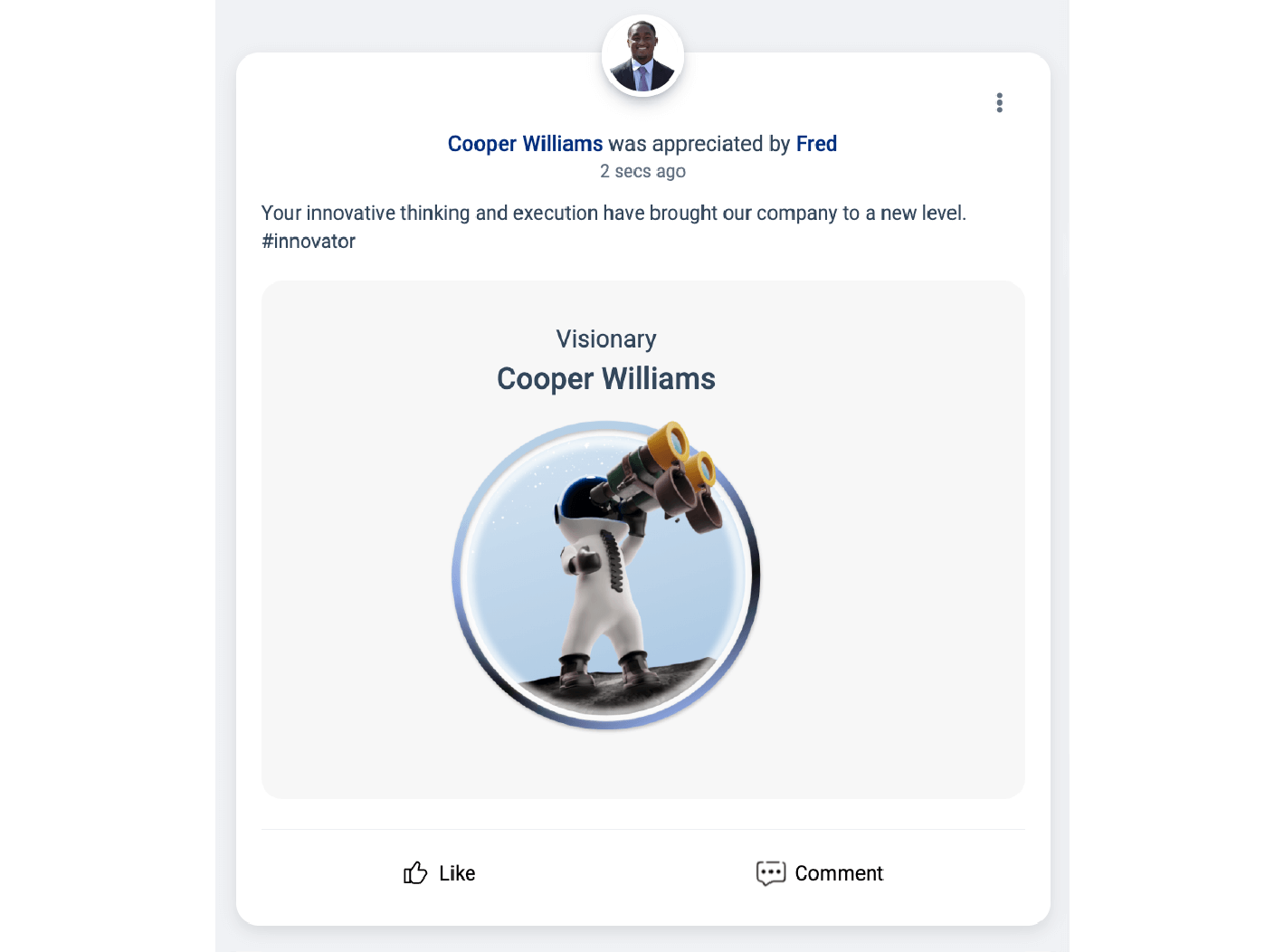Why Do Employees Stay? 8 Crucial Retention Factors
In a constantly evolving job market, it's not unusual for employees to change companies frequently, seeking new opportunities and challenges. This is where Employee Retention Factors come into play!
The real challenge isn't just hiring top talent—it's keeping them. You invest time, resources, and effort into training an employee. And then, right when you start to see the results of your hard work, the employee decides to leave.
This all-too-familiar tale highlights a harsh reality! Even when companies believe they're doing everything right, employees may still choose to leave. But why? How can you make your employees stay?
This question looms large, and its answer holds the key to understanding and addressing the complexities of employee retention.
In this article, we will explore top retention factors that affect employees and suggest solutions that help you resolve them in your organization.
Key Takeaways
- Understanding and Addressing Employee Retention Factors
- Explore the factors affecting employee retention
- Importance of building positive Employee-Manager relationships
- Explore ways to recognize and appreciate employee contributions.
- Ways to promote Work-life Balance and prevent burnout
Top 8 Factors Affecting Employee Retention
1. Poor Well-being

According to a report by Forbes, up to 50% of employees leave their current jobs because they feel burnout due to overwork and exhaustion.
When employees experience poor well-being, they are more likely to be dissatisfied with their jobs. This dissatisfaction can make employees feel disoriented and overwhelmed in their jobs.
Employees who feel physically or mentally unwell may disengage from their tasks, decreasing productivity and job performance.
An organization that neglects employee well-being not only risks losing its employees but also faces a negative reputation.
What to do:
-
Show your employees that you're invested in their holistic well-being by encouraging work-life balance. You can also promote regular health check-ups and acknowledge mental health, cultivating a culture of genuine care.
-
You can also offer Employee Assistance Programs (EAP) and counseling services to further cement your efforts.
-
Introduce your team to wellness programs such as yoga or meditation sessions to manage stress and enhance their emotional well-being.
-
Make the most out of the corporate wellness apps available in the market. They are easy to access and help you run targeted wellness challenges which can be incentivized as well.

(Source: Vantage Fit)
These initiatives collectively create a workforce that is not just productive but also happy and engaged.
2. Lack of Recognition

According to Research, employees who receive strong recognition generate twice as many ideas per month as those who don’t receive recognition.
If you want great results from your workforce, ensure that your employees feel appreciated. When employees' efforts are acknowledged and celebrated, they feel valued and respected.
When employees consistently go unnoticed for their hard work, it can lead to demotivation, lower self-esteem, and reduced job satisfaction.
High turnover often happens when employees don't feel appreciated.
When people don't get the recognition they deserve, they tend to feel undervalued and are more likely to seek employment opportunities elsewhere.
How to Improve:
-
Foster a culture of peer-to-peer recognition in the workplace to empower the employees. This will help them recognize each other, creating a positive work environment.
-
Celebrate every win publicly with the help of newsletters, digital recognition walls, or social media. This will help them feel valued and recognized at the right moment.
-
Another approach is to use virtual employee recognition programs. These platforms have numerous features that make recognition easy and on time. Platforms that provide monetary and non-monetary awards can be utilized to recognize employees and make them feel appreciated.
-
You can further make recognition meaningful by adopting an AI-powered social feed feature that allows you to acknowledge & recognize your employees instantly. This will empower your employees to appreciate each other's efforts.

Source: Vantage Circle
3. Low Employee Morale
Employee morale is the foundation of a thriving and productive workplace. It is a crucial factor that affects the success of any organization.
When morale is low, employees feel dissatisfied, demotivated, and disengaged. This leads to decreased productivity and poor work quality that can seriously impact a company's growth.
Therefore, you must recognize the signs of low morale and take proactive steps to improve it.
How to Improve:
-
Create a positive work environment where job satisfaction is prioritized, employees are given fair compensation, provided with growth opportunities, and always empowered. This helps in fostering a sense of belonging that drives morale.
-
You can also implement strategies where employees can voice their concerns, share ideas, and provide suggestions. This can be done monthly, quarterly, or in a yearly basis in the form of feedback.
-
You can take the help of survey tools that will make your task easier to execute and gather insights with realtime reporting and data.

(Source: Vantage Pulse)
- You can also plan and organize workshops, events, and team-building activities that bring your employees together. This will help in building team morale and nurture stronger connections within the workforce.
4. Lack of Career Development

When employees perceive that their career aspirations are supported and valued, they are more likely to remain engaged, motivated, and committed to their current employer.
However, the absence of clear career growth can leave employees feeling insecure and trapped in their current roles.
Imagine working in an environment where your professional aspirations are met with dead ends. This is the reality many employees face when career development opportunities are scarce.
How to Improve:
-
Establish a good career path for the employees that aligns well with their skills and roles. You need to guide them and help them grow within the organization.
-
Offer them the desired online courses and workshops that will help them stay ahead of the curve.
-
Also consider mentorship sessions where they will acquire the knowledge shared by experienced and skilled leaders.
5. Poor Employee-Manager Relationship

A Gallup study found that 50% of people leave their jobs to get away from an incompatible manager.
In any thriving workplace, the bonds between employees and their managers play a pivotal role.
A healthy employee-manager relationship creates a positive work environment, boosts productivity, and enhances overall job satisfaction.
However, a strained employee-manager relationship can cast a shadow on the work culture, resulting in high turnover rates.
How to Improve:
-
Create effective communication channels for better transparency. Invest in communication programs that bridge the gap between employers and employees. In the long run it will help leaders convey their expectations clearly while providing constructive feedback.
-
Additionally, leaders must be approachable, helping employees with the freedom to raise concerns without second thoughts. Managers need to work on their leadership skills for this to be successful.
-
Work on creating a psychologically safe workplace where employees can approach work with creativity while not being subjected to criticism. The idea is to encourage them to become flexible with their work and improve their problem-solving abilities.
-
Conduct regular one-on-one meetings that will help the leaders and workforce understand each other’s perspective. This will lead to mutual respect, and everyone can come to common ground without any conflict.
6. Low Compensation
In today's competitive job market, attracting and retaining talent often requires offering competitive salaries and appealing benefits packages.
However, when a company does not provide fair and competitive compensation, it can have many negative consequences, like high turnover, low productivity, unhappy employees, and low morale.
Employees who feel they are not fairly compensated for their work become less committed to the organization. As a result, this hinders the organization’s ability to build a stable workforce and stay competitive.
Home to Improve:
-
Conduct research on latest trends revolving around compensation and benefits. Then re-evaluate your existing structure and meet the industry standards to provide the best compensation packages.
-
You can also consider offering non-monetary benefits that suit best the present workforce. Make sure to meet the demands of your multigenerational workforce.
-
Ensure fairness and equity in the organization by conducting regular salary audits. These audits can help identify and rectify pay discrepancies across roles and departments.
7. Lack of Work-life Balance

According to statistics, 72% of workers believe work-life balance is crucial when choosing a job.
When we talk about the importance of a "healthy work-life balance," it means finding the right balance between your job and your personal life. However, employees might feel stressed and burned out when there is a lack of work-life balance.
In the modern work landscape, many organizations have failed to prioritize work-life balance in pursuit of productivity.
Employees who consistently work long hours without proper breaks or time to recharge are at a higher risk of burnout.
When companies don't make sure their employees have a good balance between work and personal life, it not only hampers the employees but also the growth of the organization in the long run.
How to Improve:
-
You can promote a good work-life balance by offering flexible work hours and promoting a hybrid work culture. This ensures that employees can juggle through their work schedules and personal commitments. In the long run, this approach helps mitigate the issue of burnout.
-
The work culture should not be rigid. It should allow the employees to take breaks whenever they feel like. This creates a perfect balance and helps employees to start with a fresh mind.
-
You can set up break rooms or a good garden space where employees can relax, socialize, and connect with each other.
-
To further enhance your efforts, you can also organize workshops on stress management. It will provide strategies to maintain a good work-life balance while managing work with ease.
8. Poor Onboarding and Training
According to Glassdoor, a positive onboarding and training experience can increase retention rate by as much as 82%.
The onboarding process is often an employee’s first real interaction with the company beyond an interview. It is the process of familiarizing new employees with the organization’s culture and making them part of the team.
However, when employees don't get the training and support they need, they might feel left out. As a result, they will not be able to connect with the missions and values of the organization.
Employees left to figure things out alone often feel overwhelmed, underprepared, or undervalued.
The lack of effective onboarding and training can result in frustrated employees, who may struggle to fulfill their roles effectively.
How to Improve:
Starting a new job can be stressful. When a new person joins a company, they feel like they are entering a new world.
To help them overcome this feeling, you can design a special employee onboarding and training program that guides them along the way. It can include the following things:
-
When new employees join your company, it's essential to show them the ropes. Explain how the company operates and conduct orientation sessions that outline the company's mission, values, and culture. Provide all the guidance they need during the initial phase.
-
To ensure a smooth employee onboarding process, introduce new hires to their team members, key contacts, and essential resources. Create a roadmap that will be their guide in each step and help them blend in the workplace.
-
New employees benefit from comprehensive training programs that inform them about the latest industry trends and best practices. This will help them perform better in their roles and stay up to date.
-
Assigning a buddy or mentor to new employees during their initial months can greatly ease their transition. This experienced colleague can help them navigate the workplace and offer valuable advice.
Recommended Resource: Top 30 Employee Retention Strategies for the “New” Business World in 2024
Wrapping Up
In today's fiercely competitive job market, holding onto your valuable employees is just as vital as bringing them on board in the first place. It's a challenge like never before.
What works for one may not work for another. Therefore, it's essential to tailor retention strategies according to your specific workforce and company culture. Think of it as a journey, not a one-time fix.
So you better gear up since the road to achieving better employee retention may be long, but it's worth every step.


















